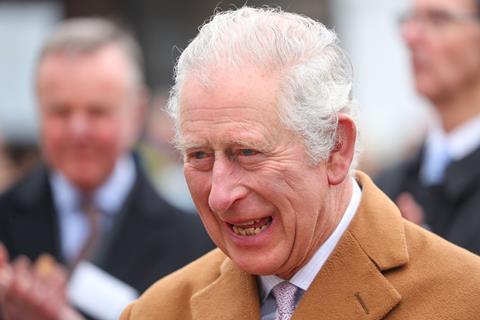Here’s our explainer on why King Charles III will take on the Defender of the Faith role

In common with his predecessors for almost 500 years, The King is known as Defender of the Faith. This is part of his full formal legal title and appears in many official items such as proclamations and Parliamentary Writs of Summons
This title dates back to the reign of Henry VIII, before the break with Rome. In 1521, Pope Leo X issued a bull (or charter) granting Henry the title – Fidei Defensor in Latin – in recognition of the theological treatise Assertio Septem Sacramentorum (or ‘Defence of the Seven Sacraments’) which he authored, possibly working with Thomas More and Cardinal Wolsey.
The title Fidei Defensor – or Fidei Defensatrix for queens – has been bestowed occasionally on other monarchs by the papacy, notably James IV and James V of Scotland.
In 1546, following the break from Rome, Parliament passed an act bestowing the title upon Henry and it has been used by subsequent English and then British monarchs.
Sometimes people colloquially refer to the monarch as the “head” of the Church of England. In the Bible Jesus is referred to as the head of the Church. Monarchs are known as “Supreme Governor” of the Church of England. This dates back to the 1558 Act of Supremacy, during the reign of Elizabeth I.
In practice this includes giving Royal Assent to ecclesiastical laws in a similar way to secular legislation and formally approving the appointment of bishops, archbishops, and a variety of other senior clergy such as many deans of cathedrals.
The Church of England is known as the “Established Church”, meaning that it is established by law and has a unique relationship with the state, forged in the settlement developed in the time of Elizabeth I and subsequent reigns intended to calm the upheavals of the Reformation period.
At the coronation King Charles III, like every monarch since George I, takes a special oath to maintain “the settlement of the Church of England and the doctrine, worship, discipline, and government thereof, as by law established”. He also undertook a separate oath at his Accession to uphold the security of the Church of Scotland.
The concept of our Established Church is occasionally misunderstood and, I believe, commonly under-appreciated
At her Diamond Jubilee in 2012, Queen Elizabeth II delivered a landmark speech explaining the concept of the Established Church in a multi-faith society.
She said: “The concept of our Established Church is occasionally misunderstood and, I believe, commonly under-appreciated. Its role is not to defend Anglicanism to the exclusion of other religions. Instead, the Church has a duty to protect the free practice of all faiths in this country.
“It certainly provides an identity and spiritual dimension for its own many adherents. But also, gently and assuredly, the Church of England has created an environment for other faith communities and indeed people of no faith to live freely.
“Woven into the fabric of this country, the Church has helped to build a better society – more and more in active co-operation for the common good with those of other faiths.”
In his first address to the nation on his accession to the throne, His Majesty the King said: “The role and the duties of Monarchy also remain, as does the Sovereign’s particular relationship and responsibility towards the Church of England – the Church in which my own faith is so deeply rooted.
“In that faith, and the values it inspires, I have been brought up to cherish a sense of duty to others, and to hold in the greatest respect the precious traditions, freedoms and responsibilities of our unique history and our system of parliamentary government.”
“As The Queen herself did with such unswerving devotion, I too now solemnly pledge myself, throughout the remaining time God grants me, to uphold the Constitutional principles at the heart of our nation.”
































No comments yet